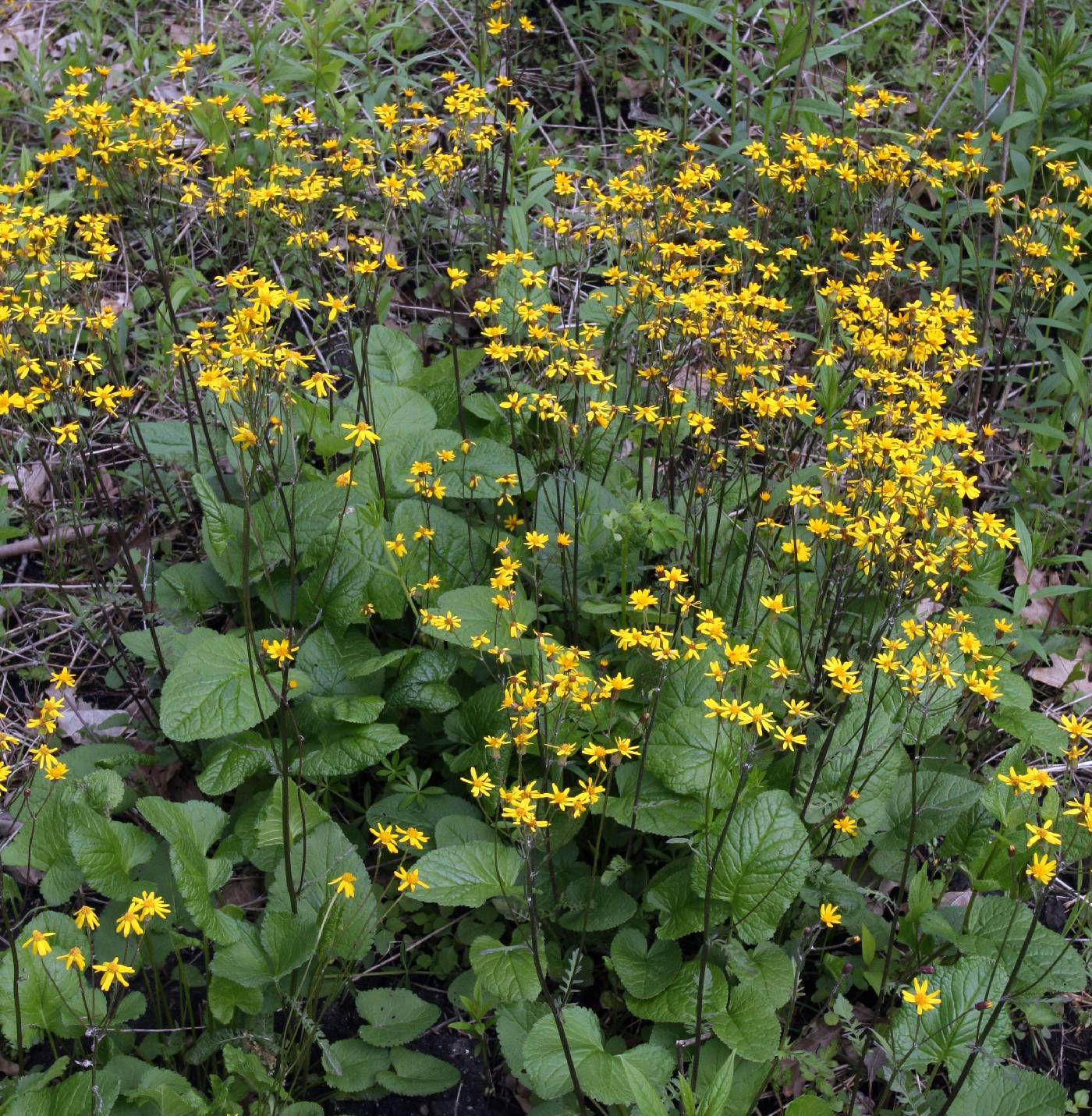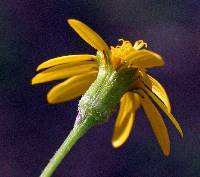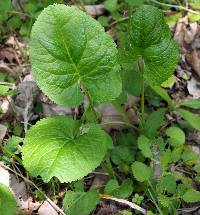|
|
|
|
Family: Asteraceae
golden ragwort
[Senecio aureus L., moreSenecio aureus var. aquilonius Fern., Senecio aureus var. gracilis (Pursh) Hook., Senecio aureus var. intercursus Fern., Senecio gracilis Pursh] |
Perennials, 30-60+ cm; rhizomatous and/or fibrous-rooted (rhizomes or caudices erect to horizontal). Stems 1 or 2-3+, clustered, glabrous or leaf axils tomentose. Basal leaves petiolate; blades cordate to reniform, 20-60 × 20-60 mm, bases abruptly contracted or ± cordate, margins crenate to crenate-serrate (apices rounded, faces glabrous). Cauline leaves gradually reduced (petiolate or sessile, not clasping; blades oblong to lyrate, lateral lobes 2-4 pairs). Heads 6-20+ in corymbiform to subumbelliform arrays. Peduncles bracteate, glabrous or sparsely tomentose. Calyculi inconspicuous. Phyllaries 13-21, green (tips purple or black), 6-8 mm, glabrous or sparsely tomentose proximally. Ray florets (8-)10-13; corolla laminae 8-10+ mm. Disc florets 55-70+; corolla tubes 3-3.5 mm, limbs 2-2.5 mm. Cypselae 1-1.5 mm, glabrous; pappi 4.5-5.5 mm. 2n = 44. Flowering late Feb-early May (south), late May-early Aug (north). Damp and swampy places in woodlands, meadows, along gravel banks and streambeds, acidic or sandy/gravelly soils; 0-1500 m; St. Pierre and Miquelon; Man., N.B., Nfld. and Labr., N.S., Ont., P.E.I., Que.; Ala., Ark., Conn., D.C., Fla., Ga., Ill., Ind., Iowa, Ky., Maine, Md., Mass., Mich., Minn., Miss., Mo., N.H., N.J., N.Y., N.C., N.Dak., Ohio, Okla., Pa., R.I., S.C., S.Dak., Tenn., Vt., Va., W.Va., Wis. Packera aurea is abundant and widespread throughout eastern United States and Canada. It reproduces asexually from branched rhizomes or from adventitious shoots. Putative hybrids between P. aurea and P. paupercula, P. pseudaurea, P. schweinitziana, and P. tomentosa have been reported.
Perennial 3-8 dm from a branched, rhizomatous caudex or creeping rhizome, often with stoloniform but coarse, leafy basal offshoots, lightly floccose-tomentose when young, soon essentially glabrous; basal lvs long-petiolate, some or all with ±strongly cordate blade, these generally broadly rounded distally, crenate, to 11 נ11 cm, mostly 0.75-1.5(-1.75) times as long as wide, often held at an angle to the petiole, parallel to the ground; cauline lvs conspicuously reduced and generally ±pinnatifid, becoming sessile upward; heads several or rather many, the disk 5-12 mm wide; invol 5-8 mm, its bracts often strongly purple-tipped; rays 6-13 mm; achenes glabrous; 2n=44, 66, ca 132. Moist woods and swampy places; Lab. to Minn., s. to N.C., n. Ga., and c. Ark.; Fla. Apr.-Aug. (S. gracilis) Gleason, Henry A. & Cronquist, Arthur J. 1991. Manual of vascular plants of northeastern United States and adjacent Canada. lxxv + 910 pp. ©The New York Botanical Garden. All rights reserved. Used by permission. |





